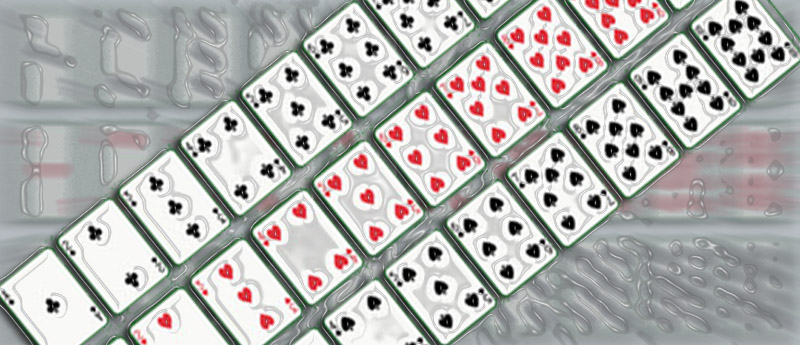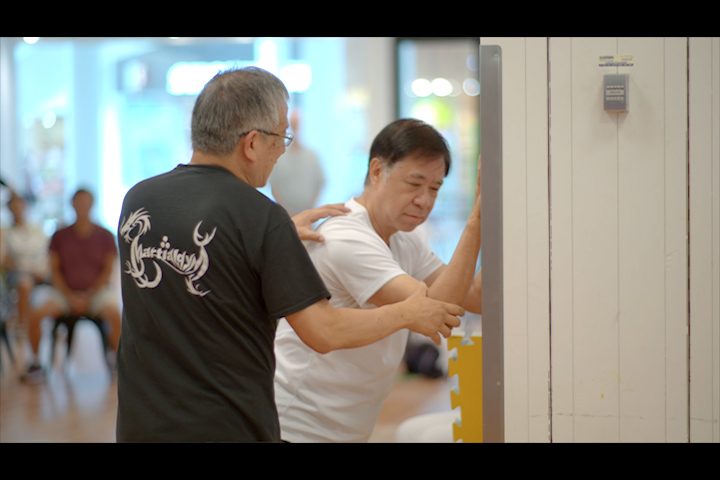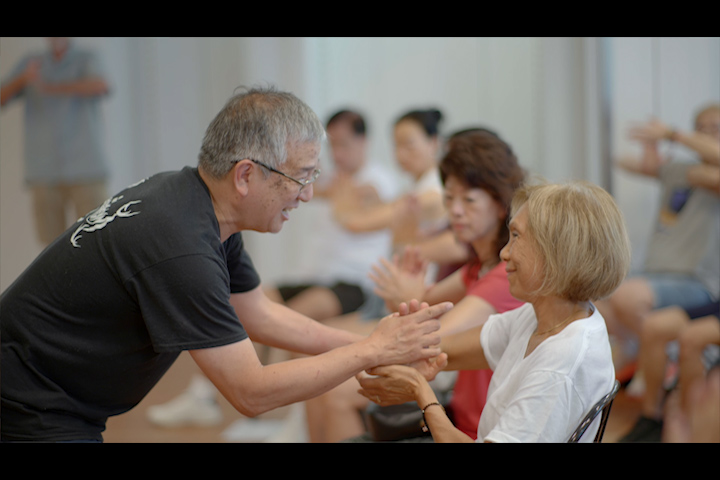Most people call this “the warmup”. To them, warmups are just some casual stretching and movements we are told to do to avoid injures – the “real” exercises comes right after. For us, “Circulation” is actually one of the development goals. Warm ups are just a subset of “Circulation” in our context.
 For seniors, it is probably not an exaggeration to say that at least half the ailments are caused by deteriorated of blood/air circulation. This deterioration is frequently caused by small chronic pain that in turn triggers reduced physical activities which then causes muscles to weaken.
For seniors, it is probably not an exaggeration to say that at least half the ailments are caused by deteriorated of blood/air circulation. This deterioration is frequently caused by small chronic pain that in turn triggers reduced physical activities which then causes muscles to weaken.
When we talk about circulation, we aim at the removal of toxic waste within the blood stream and tissues, retain suppleness within the cartilages and inter-joint gaps, facilitate blood flows to organs and lower body, and believe or not, help with the healing process. We also try to improve air flow by stretching and expanding the thoracic section of the spine, the rib cage, experimenting with more than one style of breathing, alternating rhythm and much more. The intent here is to improve blood and air circulation that will in turn improve your general well being. Hmm, doesn’t that sound the “Qi Gong” without the marketing wraps?
In general, our “warmups” goes in the following general sequence:
- Wake the body and mind by stimulating the nerve endings
- Move the spine especially the thoracic portion to address the spinal mobility and massage the vital organs
- Open up the shoulders, armpits and hips and emphasize on the postural muscles
- Alternate fast and slow movements to enhance blood flow and to stimulate the “command” system.
To improve the quality of any exercises you do, make sure you understand the purpose of each exercise. Each exercise have some very important key-points. Make sure you remember and apply those extra little things. Do alternate the speed as is applicable for each move. Ultimately, do it mindfully!
Questions and Answers
Q. Why does it matter what exercise we start with?
A. We recommend starting with the spine for two reasons: 1) It is the most important conduit for blood and air. 2) Because the spine is so neglected and yet so important, we start with it so that we will spend sufficient time on it.
Q. Why do we do some things slow, some things fast and slow?
A. We do things slow to learn and train a new movement pattern so that we fully understand how to do it properly. Furthermore, if you do it slow, you are training with a sustained command and be able to feel through all the changes. If you do it fast, the neural impulse come and disappear within split of a second.
Muscles are like sponges, it pumps blood through the body through alternating contraction and relaxation. When you wash a dirty sponge, you need to squeeze hard to drain the dirt out but then you have to pause and relax to let fresh water soak back in. In our circulation exercises, this alternation of the squeeze and relax help cleanse our body.
Q. In the winter, when I go out, I find myself shivering, is there anything that can help?
A. We usually tuck ourselves into a “ball -like” shape when we shiver. However, we tend to stay in that shape until we feel warmer. Staying in a tight ball shape does not help with blood circulation. You need blood flow to warm yourself up. So it is okay to start from that, but now squeeze the muscles tight from head to toe. Then breath out strong and relax. Pause for a couple of seconds to allow the blood to travel and then tuck in and tighten the muscles again. Hold and then relax again and after a few counts, you will feel much warmer.
Q. Should we do the “warmups” before we do the regular exercises?
A. It’s of paramount importance to shift your perspective regarding these exercises. Rather than viewing them as mere warm-ups, consider them as integral steps towards achieving the ultimate goal of “Circulation”. This shift in mindset will make you more attuned to even the subtlest changes within your body, fostering mindfulness instead of treating these exercises as something to rush through.
To seamlessly incorporate these exercises into your daily routine, consider the following:
1. Wake-Up Ritual: Begin your day in bed by opening your chest and strengthening your postural muscles, while also gently loosening your hips and lower back. This sets a positive tone for your morning.
2. Breakfast Preparations: As you get ready for your morning coffee or breakfast, integrate exercises like gentle limb flicks to invigorate your body and start your day off right.
3. Midday Breaks: After sitting for extended periods, take a moment to stretch your lower back and engage in body twists to rejuvenate your posture and energy levels.
4. Evening Wind-Down: Before wrapping up your day and heading to bed, practice falling into your bed with a tucked chin and a coiled body. This helps drain the blood flow from the head back down into your body for a more restful sleep.
By seamlessly blending these exercises into your daily activities, you not only save time but also ensure that you remember them more effectively through frequent repetition. This repetition ingrains the ideas and effects deep into your subconscious, making them second nature, even in emergencies.
Ultimately, your overall well-being will significantly improve thanks to enhanced circulation. You’ll become more in tune with your body, equipped with exercises that can be your allies even on challenging days. Embrace this holistic approach to better health, and watch how it transforms your daily life.




 For seniors, it is probably not an exaggeration to say that at least half the ailments are caused by deteriorated of blood/air circulation. This deterioration is frequently caused by small chronic pain that in turn triggers reduced physical activities which then causes muscles to weaken.
For seniors, it is probably not an exaggeration to say that at least half the ailments are caused by deteriorated of blood/air circulation. This deterioration is frequently caused by small chronic pain that in turn triggers reduced physical activities which then causes muscles to weaken.